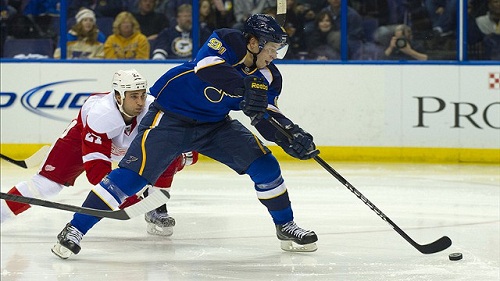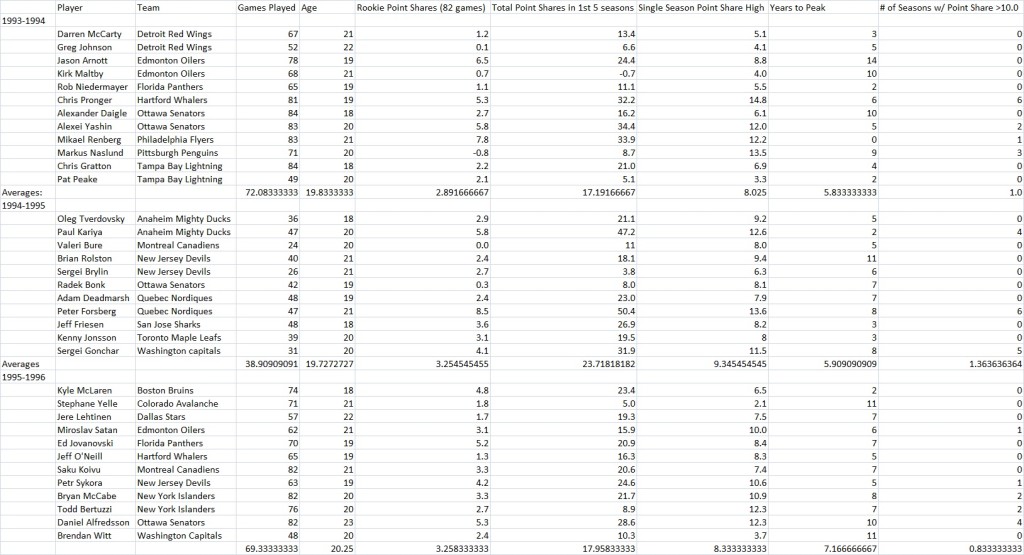How Does the NHL Lockout Affect Rookies?

A tentative agreement to end the 2012-2013 NHL lockout was reached on January 6th. It was ratified, signed, and completed on January 12th, allowing NHL training camps to open back up. Games started January 19th as the NHL attempts to pack 48 games in 99 days, affording almost no time for practices. For the veterans, it will probably take them a few games to re-adjust to the grind. But how does this affect the rookies? They are expected to pick up a new team’s system in a week, have no preseason, adjust to the pace of the NHL as they play 48 games in 99 days, and have almost no time for teaching-based practices. For foreign-born rookies, it’s even harder as they also have to adjust to the smaller rink and different rules. How does this affect their development down the road? You would think that this would impede their development somewhat and I think most would expect many rookies to struggle. However, thus far, we’ve seen some outstanding performances from rookies such as the St. Louis Blues‘ Vladimir Tarasenko, the Edmonton Oilers‘ Nail Yakupov, and others. We’ve got an incredible 43 rookies that have played at least 1 game for their team so far. That got me thinking…how did the rookies in the 1995 lockout-shortened 48 game season fair and was their development affected down the road?

(Right) Forsberg – (Kevin Larkin/AP Photo); (Left) Kariya (Brian Bahr/Getty Images)
In 1995, after 3 months and 10 days, the NHL Lockout finally ended on January 11th. The season resumed play on January 20th, and crammed 48 games in 104 days, similar to what is about to happen in 2013. Here’s my hypothesis heading in to this: I’m trying to establish that the lack of a training camp or practice did not slow the player’s development in comparison to a normal rookie season and that the rookies in 1994-1995 were able to contribute just as effectively as those in the 1993-1994 season and the 1995-1996 season. I only examined players that played their very first NHL game in the season considered and played at least half of their team’s games. I also only looked at skaters and did not look at goalies because you’ll rarely see a first year goalie get tossed in and then start more than half of the games. I looked at 12 rookies from 1993-1994, 11 rookies from 1994-1995, and 12 rookies from 1995-1996.The study was limited to just these seasons because I wanted to account for how each rookie class performed in one particular era of hockey. I looked at the statistics of each player from their first NHL season and then went to hockey-reference com to look at their point shares metric. Point shares is a metric that attributes exactly how many of his team’s points a player was responsible for that season. For the 1994-1995 season, I extrapolated the point shares to an 82-game season. With the point shares, I looked at the player’s point shares in his rookie season, the number of point shares he accumulated in his first 5 seasons (to track development), his single season high for point shares, the number of years it took him to reach that peak, and the number of seasons he had a point share above 10.0. After examining the point share metric, I thought that 10.0 was indicative of an elite season because that means that of the team’s points for that season, that player was directly responsible for 10.0 points or more. So if a team had a 100-point season and a player had a 10.0 point share, that one player was directly responsible for 10% of his team’s total points. I think that’s a pretty fair measure of an “elite” season. Alright, enough statistical jargon, let’s take a look at the results. The tables of data are available below.
(Click to Enlarge)
Here are several key takeaways that I found from the examination of the 1993-1994, 1995, and 1995-1996 seasons:
- After adjusting the point shares for an 82 game season, I found that the rookies in the 1995 lockout season had an equivalent average point share total to the 1995-1996 class (3.25) and a higher average rookie point share than the 1993-1994 class (2.89).
- In terms of development over the first 5 years, the 1995 class absolutely blew the others out of the water. The 1995 class had an average total of 23.7 point shares through 5 seasons per player. This value includes the 82 game adjusted 1995 season and that adjustment was also made for the 1993-1994 players. The 1993-1994 rookies had an average of 17.19 point shares/player through the first 5 seasons. The 1995-1996 rookies had an average of 17.96 point shares per player through 5 seasons.
- In terms of the overall career, I wanted to see the highest single-season point share total for each player. The 1995 class had an average single-season high of 9.35, the highest mark. The 1993-1994 class had an average single-season high of 8.03, and the 1995-1996 class had an average of 8.33.
- So what if that player never turned in to a superstar? Superstars are few and far between and most players end up as solid role players. The next metric I looked at was the number of years it took each player to reach their personal single-season point share high. The 1993-1994 players reached their single-season highs the fastest, needing 5.8 years. The 1995 class was a close second at 5.9 years, and the 1995-1996 class took an average of 7.2 years before reaching their career apex.
- Finally, what about those elite players? There were definitely some gems in each. The 1993-1994 class had 4 different players register seasons with a point share total of 10.0 or more and as a class, they averaged 1 10.0 point share season per player. The 1995-1996 class had 5 different players register a season of 10.0 or more, but a class averaged less than 1 10.0 season per player. The 1995 class on the other hand only had 3 players register seasons of 10.0 or more, but as class had the highest average of 1.36 10.0 seasons per player.
So what can we really say about the lockout and its effects on NHL rookies? Well from this short analysis, I can safely say that the lockout did not impede the development of these NHL rookies. Another important factor to think about is that international hockey was not as big back in 1994-1995 as it is now. Many of these players did not benefit from having the opportunity to jump overseas to stay fresh and in shape. Another interesting thing noted was that the 1995 lockout class was the youngest of all the classes, peaked the 2nd fastest, and had the highest career potential of the three. Two of the players who were rookies in 1995 actually set career highs the following season in goals and points. I can only speculate, but I wonder if NHL GM’s are too careful with their rookies early on. A lot of the rookies in 1995 were tossed in to the fire as depth and youth became extremely important in the condensed season. I wonder if having the opportunity forced upon them allowed them to develop quicker and adjust to the game better. It’s often said that the more time you have to think, the more likely you are to make a mistake. Keep it simple and just play hockey. We’re starting to see that already through the first 3 or 4 games this season as players such as Tarasenko, Yakupov, Boston’s Dougie Hamilton, Tampa’s Cory Conacher, and Detroit’s Damien Brunner have already had big impacts on their team. Only time will tell if this class of rookies has an accelerated growth similar to the 1995 rookie class.

(Scott Rovak/USA Today Sports)



